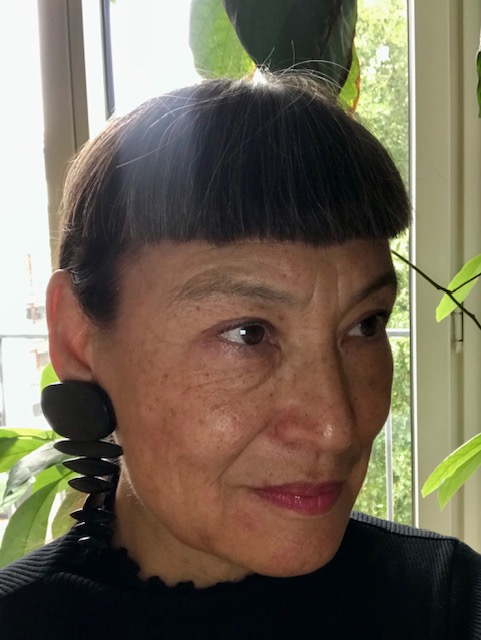Research project to make the fashion industry more sustainable
In a new research and innovation project, researchers from Aarhus University, in collaboration with a number of international partners, will make recommendations to the European Commission on how to make the fashion industry more sustainable. The research and innovation project has received funding of almost DKK 30 million from Horizon Europe.



The fashion industry is known for “fast fashion”, which means that clothes and shoes are produced cheaply and quickly to meet changing fashion trends. This leads to massive overconsumption, and today, clothes and footwear are among the largest consumers of raw materials, water and farmland and one of the largest sources of greenhouse gas emissions.
In a new research and innovation project entitled CRAFT-IT4SD (Craft Revitalization Action for Future-proofing the Transition to Innovative Technologies for Sustainable Development), researchers, in collaboration with a number of companies, will focus on how the fashion industry can become more sustainable in order to meet future EU requirements. Even though more companies are starting to think about sustainability, sustainability cannot be left to the individual company in the fashion industry, but needs to be regulated by legislation.
Clear climate goals
The European Commission has set clear goals of reducing the climate impact of fashion and textile production and waste. The goal is for textile products on the EU market to be long-lasting, recyclable and free from hazardous substances by 2030. They must be produced with respect for social rights and the environment. Consumers will benefit from the long-lasting textiles, which means that fast fashion will become less popular.
“It requires a huge transition of the fashion industry that small and medium-sized companies are part of, but also to a high degree the large fashion industry that has been living off fast fashion. They all have to comply with the new legislation. That’s why part of our project is also about the legal part of it. How do you as a company figure out which tools and resources you can benefit from when you need to adapt?” says Adriënne Heijnen, who is heading the project together with Associate Professor Marianne Ping Huang.
The solution must be found between new and old
Part of the answer to this question will come from the recommendations that the researchers will draw up in collaboration with selected international companies. What they all have in common is that they are small, locally rooted companies with a strong tradition of craftsmanship, from wool spinning in Denmark, embroidered patterns in Romania to the Sami people’s production of clothes and tools in northern Finland.
“Just like the construction industry, the cultural and creative industries need to turn their attention to cultural heritage. - Marianne Ping Huang
“Just like the construction industry, the cultural and creative industries need to turn their attention to cultural heritage. We will look at the craftsmanship and techniques of the past, which were often characterised by high quality and thereby also a high level of sustainability. At the same time, we also need to look at the extent to which they can be scaled up, so that large industries can also learn from them," says Associate Professor Marianne Ping Huang.
The key to improving sustainability does not only lie in traditional craftsmanship. According to the two researchers, sustainability must be found in the interplay between the analogue and the digital, between craftsmanship and communities, and between cultural heritage and technology.
“Our project will consist of many examples from creative people who have different ways of working, which we want to promote and communicate to the entire fashion industry. The large industry is interested in incorporating some of the innovation and creativity which the small-scale players often possess, and which they themselves may have moved a bit further away from because they are woven into a market-driven approach,” says Adriënne Heijnen, and Marianne Ping Huang adds:
The large industry is interested in incorporating some of the innovation and creativity which the small-scale players often possess, and which they themselves may have moved a bit further away from because they are woven into a market-driven approach. - Adriënne Heijnen
“We want to show how to work with technology, so we don’t just focus on recycling material. If we are to change the fast fashion mindset, we need to create a new mindset where we teach the consumer to appreciate their clothes in the closet and see the beauty in repairing them, so that clothes also become something we can really attach stories and value to.”
Facts about the project
The project CRAFT-IT4SD (Craft Revitalization Action for Future-proofing the Transition to Innovative Technologies for Sustainable Development) has received funding of almost DKK 30 million from Horizon Europe. The collaboration consists of 11 partners across 7 countries. The new European Knowledge and Innovation Community (KIC), EIT Culture & Creativity, is a partner in CRAFT-IT4SD and will ensure that the results of the project will be disseminated to several European countries. CRAFT-IT4SD is part of the EIT Culture & Creativity work plan, where fashion, sustainability and technology are among the major priorities.
Contact:
Adriënne Heijnen, Senior Advisor
Email: ahe@cc.au.dk
Mobile: +45 24946328
Marianne Ping Huang, Associate Professor
Email: mph@cc.au.dk
Mobile: +45 51371208
